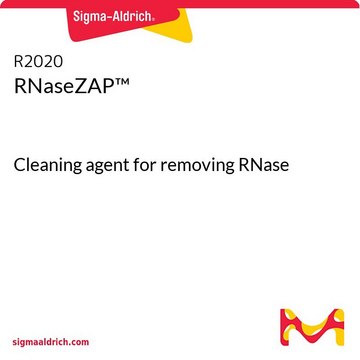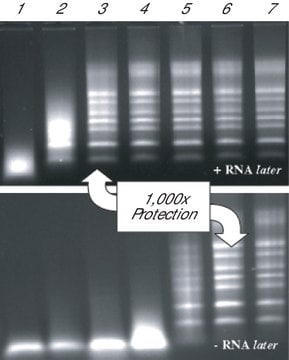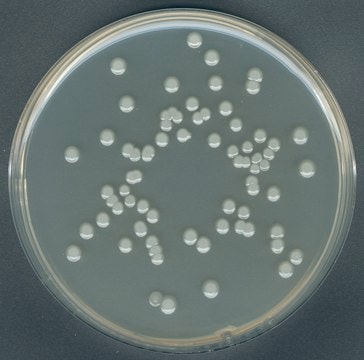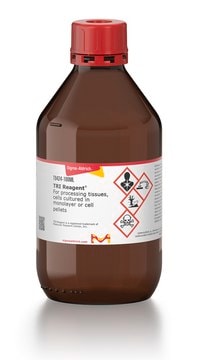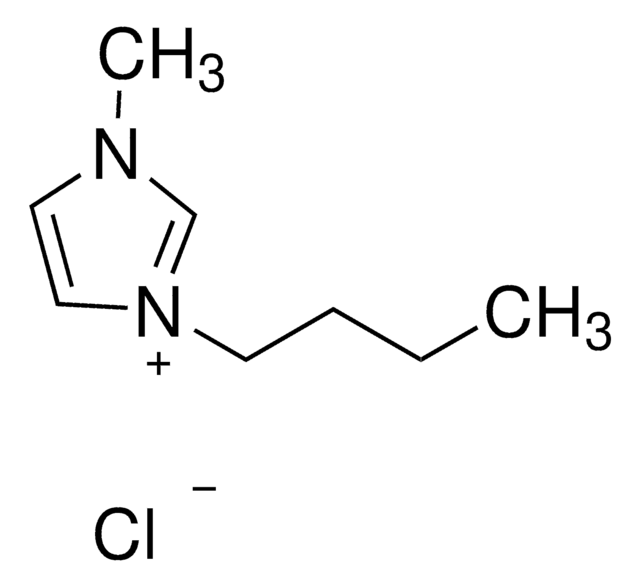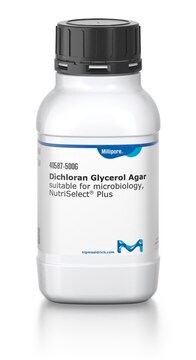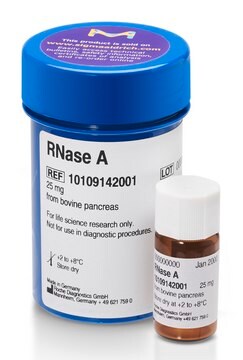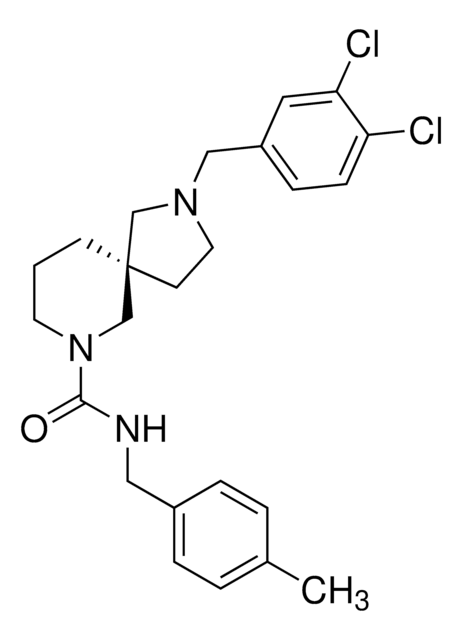83931
RNase AWAY®
decontamination reagent for RNase
Sinónimos:
Surface Decontaminant
Iniciar sesiónpara Ver la Fijación de precios por contrato y de la organización
About This Item
Productos recomendados
Categorías relacionadas
General description
RNase AWAY® is a ready-to-use surfactant that removes RNA and RNases from lab equipment. Suitable for PCR equipment, plastic, glassware, and stainless steel lab surfaces.
Application
RNase AWAY® has been used:
- in flow cytometry analysis
- to sterilize coated microstir bars for the formation of colloidal emulsion
- to remove RNAse from biosafety cabinet and lab equipment
- as a chemical to analyse the dynamic transcriptional and epigenetic remodeling during astrogliogenesis
Caution
Gloves should be worn when handling this product. RNase Decontamination Reagent is alkaline in nature and will cause irritation if prolonged contact with the skin is allowed. In case of contact with eyes, immediately flush with water for fifteen minutes and contact a physician. If swallowed, do not induce vomiting. Give plenty of water and contact a physician immediately.
Other Notes
Do not use RNase Decontamination Reagent on aluminium, soft metal or gaskets and seals. This product is not intended as reactant. Do not add to reaction.
Legal Information
AWAY is a registered trademark of Molecular BioProducts, Inc.
RNase AWAY is a registered trademark of Molecular Bio-Products, Inc.
related product
Referencia del producto
Descripción
Precios
signalword
Warning
hcodes
Hazard Classifications
Eye Irrit. 2 - Met. Corr. 1 - Skin Irrit. 2
Storage Class
8B - Non-combustible corrosive hazardous materials
wgk_germany
nwg
flash_point_f
Not applicable
flash_point_c
Not applicable
ppe
Eyeshields, Gloves
Elija entre una de las versiones más recientes:
¿Ya tiene este producto?
Encuentre la documentación para los productos que ha comprado recientemente en la Biblioteca de documentos.
Los clientes también vieron
CRISPR-Cas9 genome engineering of primary CD4+ T cells for the interrogation of HIV-host factor interactions
Hultquist JF, et al.
Nature Protocols, 1-1 (2018)
Nethaji Thiyagarajan et al.
The FEBS journal, 278(3), 541-549 (2011-01-06)
Molecular probes are useful for both studying and controlling the functions of enzymes and other proteins. The most useful probes have high affinity for their target, along with small size and resistance to degradation. Here, we report on new surrogates
In vitro Generation of CRISPR-Cas9 Complexes with Covalently Bound Repair Templates for Genome Editing in Mammalian Cells
Savic N, et al.
Bio-protocol, 9(1) (2019)
Loss of MiR-664 expression enhances cutaneous malignant melanoma proliferation by upregulating PLP2
Ding Z, et al.
Medicine, 94(33) (2015)
Máire F Quigley et al.
Current protocols in immunology, Chapter 10, Unit10-Unit10 (2011-08-03)
A detailed knowledge of the principles that guide clonal selection within the memory and effector T cell pools is essential to further our understanding of the factors that influence effective T cell-mediated immunity and has direct implications for the rational
Nuestro equipo de científicos tiene experiencia en todas las áreas de investigación: Ciencias de la vida, Ciencia de los materiales, Síntesis química, Cromatografía, Analítica y muchas otras.
Póngase en contacto con el Servicio técnico